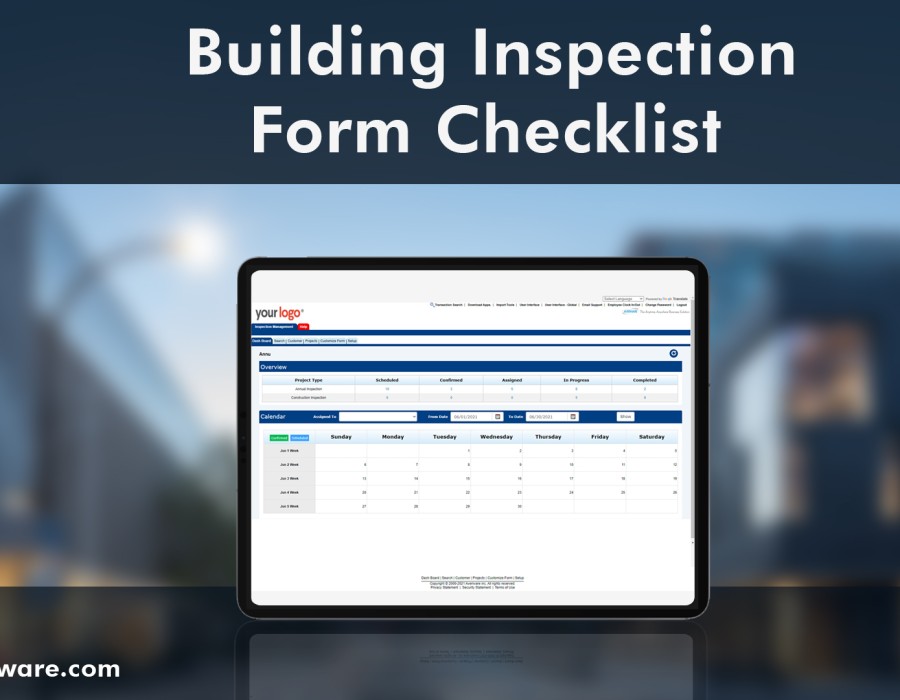A building inspection is a meticulous and crucial process, whether you are a homeowner, a real estate professional, or a property investor. It's a comprehensive assessment that helps you understand the condition of a structure, identify potential issues, ensure safety, and make informed decisions. At Averiware, we understand the importance of a well-structured building inspection checklist. In this guide, we'll explore the essential components of a building inspection checklist to ensure that your inspections are thorough, systematic, and effective.
The Purpose of a Building Inspection:
A building inspection serves as a critical tool for ensuring the safety, quality, and compliance of a structure. Its primary purpose is to provide a comprehensive evaluation of a building's condition, covering everything from its foundation to its roof. Safety assurance tops the list, as it verifies that the building is safe for occupancy, protecting the well-being of those who inhabit it.
Quality assessment ensures that the construction work meets established standards, laying the foundation for long-term durability. Compliance verification confirms that the building adheres to local building codes and regulations, preventing legal complications and costly retrofits.
Lastly, documentation is pivotal, offering a detailed record of the structure's state at a specific point in time, invaluable for insurance claims, legal disputes, or resale evaluations. Building inspections are, therefore, indispensable for anyone involved in real estate, construction, or property maintenance, providing peace of mind and informed decision-making. Before delving into the specifics of what you need in a building inspection checklist, it's vital to understand why building inspections are conducted.
Safety Assurance: Building inspections ensure that a structure is safe for occupancy and use. This includes checking for potential hazards that could jeopardize the safety of occupants.
Quality Assessment: A building inspection evaluates the quality of construction work, ensuring that it meets established standards and regulations. This is essential for the long-term durability and reliability of the structure.
Compliance Verification: Building inspections confirm that the construction adheres to local building codes and regulations. This helps avoid legal issues, fines, and costly remediation efforts.
Documentation: Building inspections provide a detailed record of the condition of the building at a specific point in time. This documentation can be invaluable for insurance claims, legal disputes, or resale purposes.
Given these critical purposes, a well-structured building inspection checklist is indispensable.
Essential Components of a Building Inspection Checklist
The building inspection checklist is a comprehensive tool that ensures a systematic evaluation of a structure. At Averiware, we recognize the importance of these essential components:
Exterior Inspection: Covering the foundation, roof, siding, windows, and landscaping, it helps assess structural integrity and weather resistance.
Interior Examination: Focusing on structural components, electrical systems, plumbing, HVAC, ceilings, walls, and flooring to ensure occupant safety and comfort.
Safety Verification: Confirming the functionality of safety features like smoke detectors, handrails, fire extinguishers, emergency exits, and ventilation systems.
Systems Assessment: Evaluating plumbing, electrical, HVAC, appliances, and water heaters to ensure they function correctly.
Environmental Inspection: Identifying environmental hazards like radon, mold, asbestos, lead paint, and pest infestations, protecting health and well-being.
Documentation: Keeping thorough records, including photographs, detailed notes, and a comprehensive report with actionable recommendations.
A well-structured checklist empowers professionals to conduct comprehensive building inspections, promoting safety, quality, and informed decision-making.
Documentation and Reporting:
Photographs: Take clear photographs to document any issues or areas of concern. Visual evidence is valuable for your records and any subsequent discussions or negotiations.
Detailed Notes: Maintain thorough notes of your findings, including descriptions, locations, and any recommended actions. Detailed notes facilitate clear communication with stakeholders.
Report Generation: Create a comprehensive report summarizing your inspection, findings, and recommendations. A well-structured report is a vital communication tool.
Recommendations: Include clear and actionable recommendations for repairs, further evaluations, or maintenance. These recommendations guide decision-making and prioritize necessary actions.
The Inspection Process:
With a comprehensive checklist in hand, it's essential to understand how to effectively conduct a building inspection:
Preparation: Gather the necessary tools and equipment, including a flashlight, ladder, moisture meter, safety gear, and a clipboard for note-taking.
Exterior Inspection: Begin the inspection on the exterior of the building, starting with the foundation and working your way up to the roof. Methodically inspect each component, paying attention to details.
Interior Inspection: Move inside the building, methodically inspecting each room and system. Pay close attention to structural components, electrical systems, plumbing, HVAC, ceilings, walls, and flooring.
Safety and Systems Inspection: Dedicate specific time to checking safety features and systems, ensuring that they meet safety standards and function correctly.





Comments